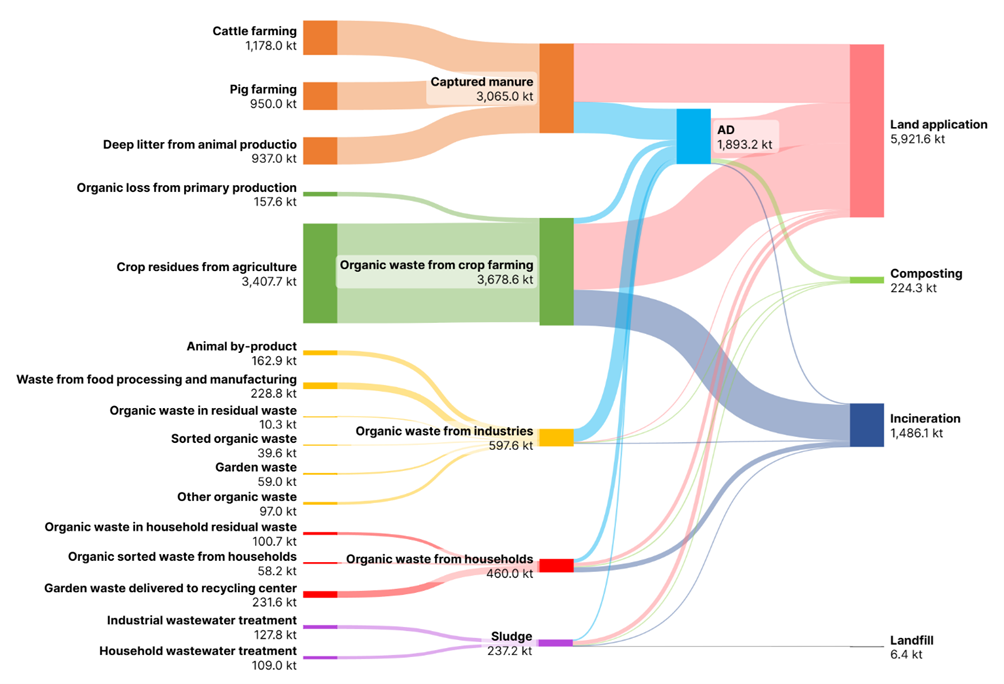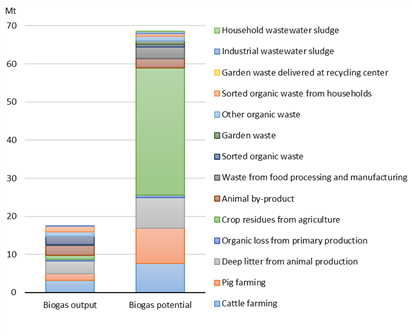MFA: a “GPS” to navigate circular economy potential in sustainable waste management
MFA is a systematic method to quantify the flows and stocks of materials or substances within a predefined spatial and temporal boundary. MFA is widely applied in waste management and acts as a “GPS” to track the material movement from generation to disposal. MFA helps monitor quantities and quality of materials in waste streams. By understanding the composition of waste, policymakers and waste managers can improve waste collection and management strategies. Dynamic MFA integrates historical data with future scenario modeling to provide policymakers with “experiment” results under different context.
Firstly, MFA helps monitor material flows along the supply chain. Secondly, by tracking the flow of recyclable materials, MFA can identify opportunities to enhance the recovery and utilization efficiency of waste streams. Lastly, by understanding the composition of waste, policymakers and waste managers can improve waste collection and management strategies, gaining insights into the efficiency of existing recycling processes while also identifying opportunities for future improvements.
Significant recycling potential of biobased side streams in Denmark
As part of TREASoURcE project, a dynamic MFA was developed for biobased side and waste streams from generation, treatment, and recycling potential in Denmark. We compiled Danish public databases and literature to monitor five main categories of biobased streams – captured manure, organic waste from crop farming, organic waste from industries, organic waste from household and sludge from sewage treatment.
Denmark is well known for its strong agricultural sector, and with that comes an abundance of biobased side streams—organic byproducts from farming and food production. The biggest contributors are livestock farming and agricultural production. With Denmark being one of the world’s top pig producers, it’s no surprise that manure and agricultural residues make up a large share of these biobased side streams. But what happens to these biobased side streams? And how can they be better utilized to support Denmark’s green energy transition?
Most of the manure and crop residues are spread on crop fields as fertilizer, while anaerobic digestion (AD) has become an important solution for handling biobased side streams in Denmark over the past decade.
During AD process, organic material is broken down by microorganisms in oxygen-free conditions and biogas, a renewable alternative to natural gas, is produced. The leftover material, called digestate, is a nutrient-rich fertilizer that can be applied to crop fields. When manure is used for biogas production, greenhouse gas emissions from handling and storage of slurry are reduced. Biogas production is therefore seen as a technology that combines green energy production and waste treatment.
Denmark’s biogas industry has exploded since 2012, thanks to new subsidy schemes encouraging its development. Initially, most biogas was used for electricity generation, but today, around 80 % is upgraded to biomethane and injected into the national gas grid. This shift is expected to continue. Even more impressively, Denmark has set an ambitious goal: 100% green gas consumption by 2030.
Despite the rapid growth of biogas production, less than a third of Denmark’s biobased side streams are currently used for biogas. Crop residues have the greatest potential for biogas production. In fact, crop residues and organic waste from food processing have significantly higher biogas yields than manure, making them the best raw materials for biogas production.
Our study shows that if all domestic biobased side streams were fully utilized, Denmark could produce enough biogas to meet its total gas demand. Denmark has the potential to become completely self-sufficient in renewable gas while drastically cutting carbon emissions. But achieving this requires more efficient collection of biobased side streams, biogas plant upgrades to maximize production and policy support to accelerate Denmark’s transition to green energy.
With the right approach, Denmark can lead the way in sustainable biogas production, reducing reliance on fossil fuels and moving one step closer to its 2050 climate neutrality goal.
System definition is the first and key step, and it was defined to include all plastic flow from production and manufacturing to consumption and ultimately to waste management & recycling. Data were compiled from multiple sources: official databases, peer-reviewed publications, expert opinions, and grey literature. The plastic flows and stocks are mapped for Finland for 2020 (see Figure 2). The results show that most plastic waste comes from packaging sector, followed by transportation and consumer sector. It is noticeable that most plastic waste goes to incineration for energy recovery rather than material recycling. This situation needs to be changed in the future. In TREASoURcE, we will explore the recycling potential of these plastic waste streams and help identify the most sustainable recycling pathways in the context of the Nordic countries.
24.4.2025 | Xuewei Liu (University of Southern Denmark, SDU)
For more information, contact: xuli@igt.sdu.dk


